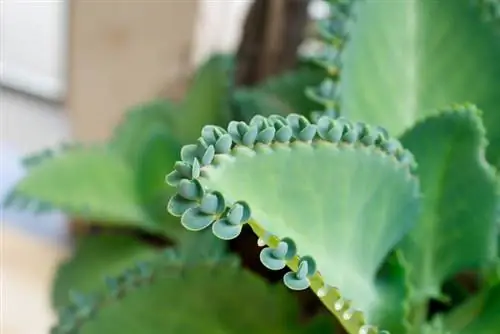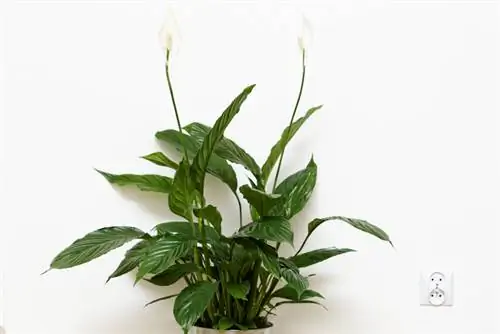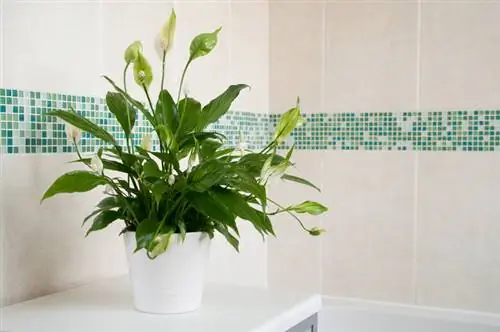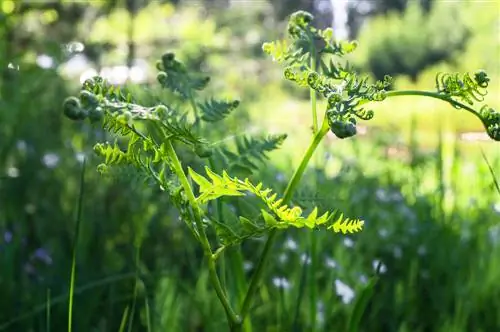- Author admin [email protected].
- Public 2023-12-16 16:46.
- Last modified 2025-01-23 11:20.
Originally native to Madagascar, the easy-care breeding leaf has moved into many living rooms. Strictly speaking, this is a genus to which different species belong. Bryophyllum (Latin name for brood leaves) belong to the thick-leaf family.
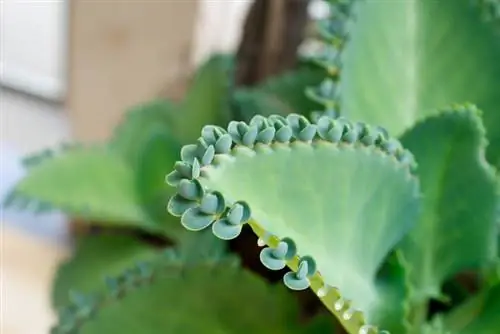
Can you eat brood leaf?
The brood leaf is not suitable for consumption as it is classified as non-toxic to slightly toxic and should not be used for self-medication or as a food plant. Instead, it is valued for its decorative effect and special way of propagation.
The different species differ visually, sometimes considerably. There are also differences when it comes to edibility or toxicity. The brood leaf is considered to be non-toxic to slightly toxic, but also as a herbal remedy. However, it is not suitable for self-medication or as a food crop. Accidental consumption of small quantities is unlikely to have any serious consequences.
The brood sheet in medicine
In its Malagasy or African homeland, the brood leaf is used as a medicinal plant, although the effect and/or application can vary depending on the species. It is said to have a number of different effects. The brood leaf is said to not only relieve pain and relax the muscles, but also reduce fever and even have an antibacterial effect. The brood leaf (Bryophyllum) has also found a place in homeopathy.
The most important things in brief:
- non-toxic or slightly toxic depending on the species
- used as a homeopathic remedy
- used as a medicine in its homeland
- not suitable for self-medication
- Awarded effect: fever-reducing, muscle-relaxing, pain-relieving, antibacterial
What’s special about the brood leaf
The special thing about the brood leaf is not necessarily its flowers or the possible healing effects, but rather its special way of reproduction. This doesn't require any help. The brood leaf independently and continuously forms small mini-plants which, depending on the species, grow on the entire leaf edges or only on the leaf tips.
These daughter plants only fall off when they are sufficiently rooted and can continue to grow on their own. To prevent your flower pot from becoming overpopulated, collect the plants and give them separate pots. By the way, this thick-leaved plant is also called the children's tree (because of the small children on the edges of the leaves) or the Goethe plant because he liked to give the plants away as gifts or send them by post.
Tip
You should not use your brood leaf as a food plant or for self-medication. Instead, enjoy its appearance and its joy in reproduction.

